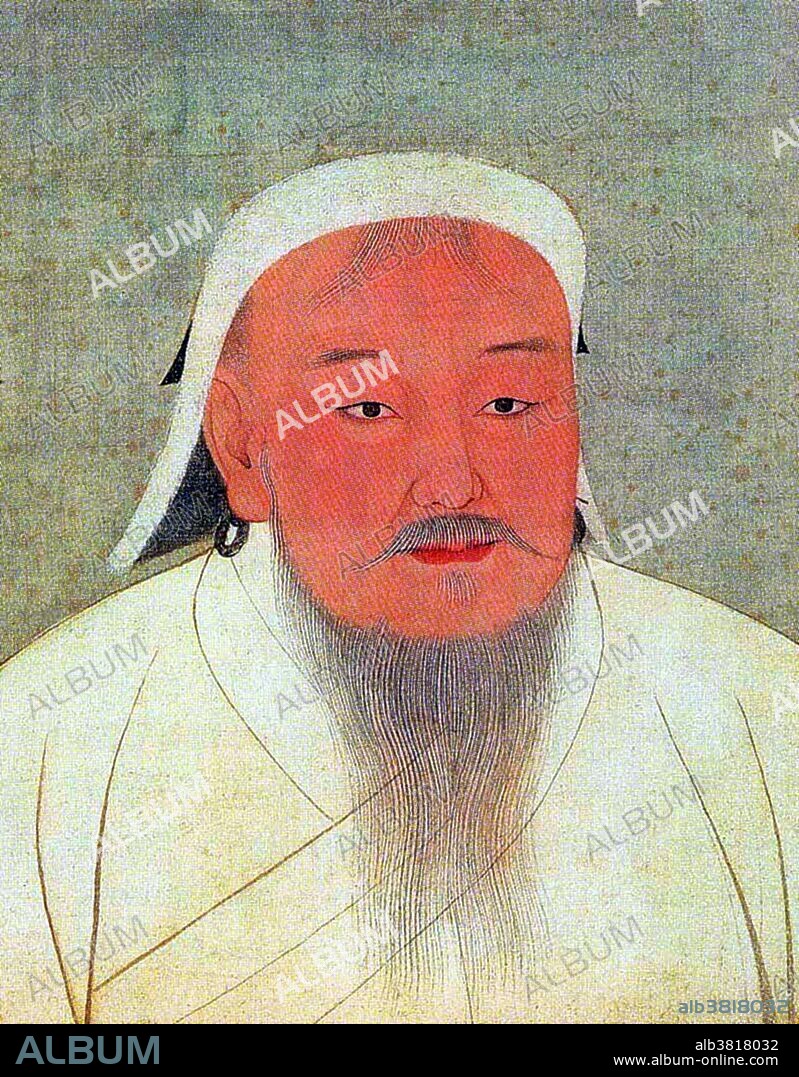alb3818032
Genghis Khan, Supreme Emperor of the Mongols

|
Ajouter à une autre Lightbox |
|
Ajouter à une autre Lightbox |



Avez-vous déjà un compte? S'identifier
Vous n'avez pas de compte ? S'inscrire
Acheter cette image.
Sélectionnez l'usage:

Titre:
Genghis Khan, Supreme Emperor of the Mongols
Légende:
Voir la traduction automatique
Genghis Khan as portrayed in a 14th century Yuan era album. Genghis Khan (1162 - 1227) was the founder and Great Khan (emperor) of the Mongol Empire. He came to power by uniting many of the nomadic tribes of northeast Asia. After founding the Mongol Empire and being proclaimed "Genghis Khan," he started the Mongol invasions that resulted in the conquest of most of Eurasia. These campaigns were often accompanied by wholesale massacres of the civilian populations. He decreed the adoption of the Uyghur script as the Mongol Empire's writing system. He also promoted religious tolerance in the Mongol Empire, and created a unified empire from the nomadic tribes of northeast Asia. Present-day Mongolians regard him as the founding father of Mongolia. He died in 1227 and was buried in an unmarked grave somewhere in Mongolia at an unknown location. His descendants went on to stretch the Mongol Empire across most of Eurasia by conquering or creating vassal states out of China, Korea, the Caucasus, Central Asian countries, and substantial portions of modern Eastern Europe, Russia and the Middle East. Many of these invasions repeated the earlier large-scale slaughters of local populations. As a result Genghis Khan and his empire have a fearsome reputation in local histories.
Crédit:
Album / Science Source
Autorisations:
Modèle: Non - Propriété: Non
Questions sur les droits?
Questions sur les droits?
Taille de l'image:
2700 x 3459 px | 26.7 MB
Taille d'impression:
22.9 x 29.3 cm | 9.0 x 11.5 in (300 dpi)
Mots clés:
13E SIECLE • 13EME S • CÉLÈBRE • CELEBRITE • CONQUERANT • CONQUISTADOR • HOMME • ILLUSTRATION • KHAN • MINIATURE • MONGOLS • PERSONNAGES • PERSONNALITÉS • PERSONNE • PORTAIT • PORTRAIT • POTRAIT • TREIZIÈME SIÈCLE • TRIBUS MONGOLIENNE • XIIIE SIECLE
 Pinterest
Pinterest Twitter
Twitter Facebook
Facebook Copier le lien
Copier le lien Email
Email
